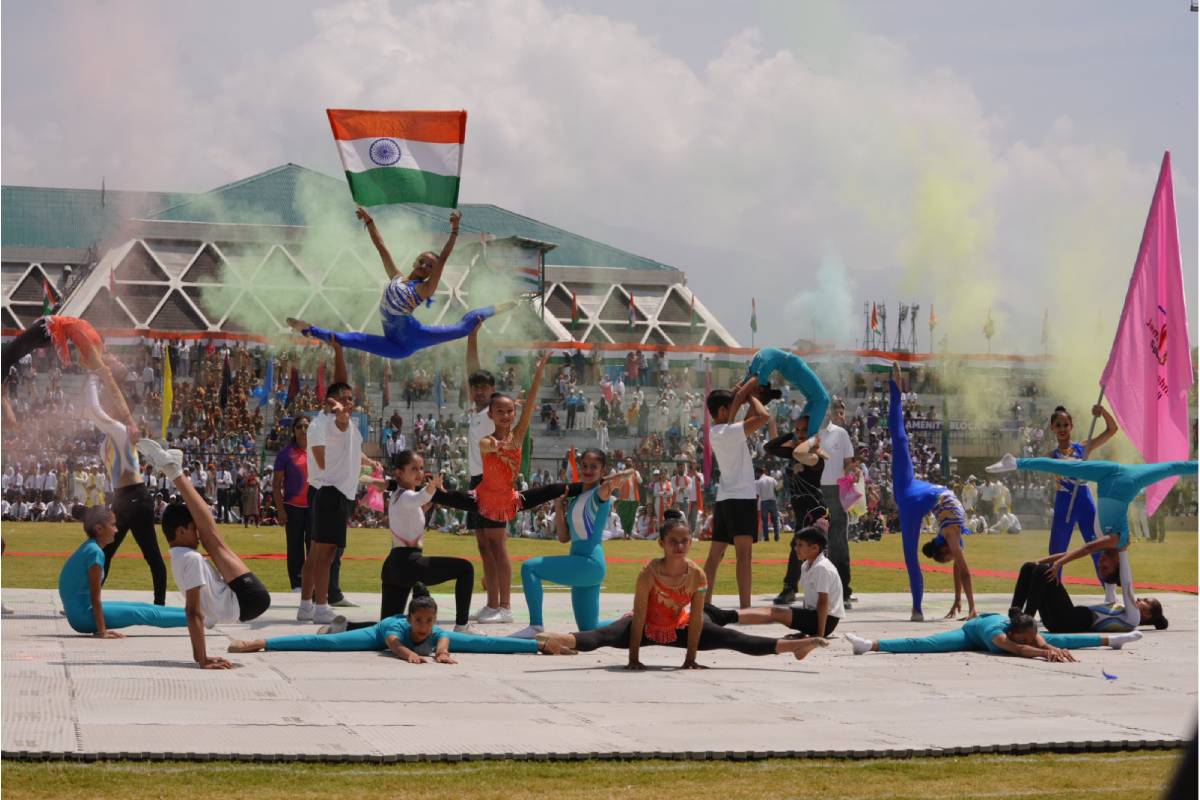
Amidst fervent Independence Day celebrations in Kashmir, author Arshia Malik fondly recalls her Srinagar school days

The Independence Day celebrations in Jammu and Kashmir this year have come full circle for our generation that bore the brunt of the Pakistan-sponsored Islamic jihad for over 30 years. Even as a Constitution Bench of the Supreme Court is consecutively hearing pleas challenging abrogation of Article 370, people in Kashmir have shown their fervent patriotism by participating in Tiranga Yatras, rallies and other functions. Thousands of Kashmiris, including women and children, witnessed the parade at the Bakshi Stadium, the sole sports stadium in Srinagar city.
In the 1980s as school kids, we used to be part of the celebrations at the stadium. The practice sessions would start in July itself and since Kashmir’s educational establishment did not have a summer break of the kind the mainland follows, those weeks of daily trips to the stadium with our parade contingents meant cherished memories of summer. Our batches were cosmopolitan in nature, comprising Kashmiri Pandits, Muslims, Sikhs, Christians, and Buddhists from indigenous families of the valley and others from states all over the country – which resembles a mini-India.
The bonhomie that those trips to the stadium formed among us still exists despite upheavals caused by Islamic jihad, thanks to social media. Scenes of our kids and grandkids proudly waving the national flag and singing praises of Mother India in various districts of the Valley took me back to my school days when people from all faiths celebrated national festivals together with unity and sheer patriotism.
Today even the districts like Pulwama, Kulgam and Kupwara – which were considered hubs of terrorism – now boast sports complexes, recreational centres, winter and water games facilities, which my generation could not even dream of. Being a natural-born athlete, it gives me immense pleasure to see Kashmiri women participating in various martial arts training centres, and other male dominated arenas such as taekwondo and kickboxing. It is a matter of pride for a former national player to see choices open in various sports for the men/boys as well after the limited ones of the 80s – basketball, cricket, badminton, table tennis, football, volleyball, and athletics.
Former stone pelters have now venues to channelise their energies, their misdirected resentment, bottled up rage of the decades of turmoil, and are transforming them into medals, victories, certificates and records in domestic as well as internationally competitions. Personally, the deaf teams for cricket, winter games and special Olympics competitions are an achievement close to my heart since I worked with the differently-abled for a few years in Srinagar city.
Kashmiri media is full of photographs of the new facades of buildings, roads, institutions, educational establishments, and natural beauty with special emphasis on the activities being conducted for youth to explore their potential. The significant increase in government-sponsored events and developmental efforts highlights the remarkable progress that Kashmir and its people have made. This journey reflects a departure from the past when terrorists, supported by local collaborators often associated with the Jamaat-i-Islami, and funded by anti-India networks globally, sought to partition the Indian subcontinent once more by establishing an independent Islamic State in Kashmir.
This 77th year of India’s Independence signifies the victory in the battle but the war is far from over. At least two generations have been radicalised by the Salafi/Wahhabi virus, and the region grapples with issues such as drug abuse, narco-terrorism and hybrid terrorists. Kashmir males still remain vulnerable to agenda groups and activists’ recruitment drive in the oppression Olympics (perpetual victimhood of Indian Muslims). This is a war we are still fighting.
The territory may have been secured but it still must be fortified so that the mistakes of the 60s, 70s and 80s which enabled the Master Cell, Al-Fatah group, and the eventual JKLF/Hizb terror outfits (tanzeems) to flourish are not repeated. It is worth reminding mainland India that more Kashmiri Muslims died and became ideological refugees than the Kashmiri Pandits ethnically cleansed during the Jihad terror pogrom.
Even today, it is Kashmiri Muslims who are on the front lines in the battles against political Islam, which upholds the failed Two-Nation Theory evident in the travails of our permanent enemy Pakistan’s political and military drama. Be it through J&K Police or armed forces, Kashmiri Muslims continue to lead counter-terrorism efforts in the Valley. The enthusiastic participation of Kashmiri children in Independence Day celebrations serves as testament to Kashmir’s integration with India’s national identity, the identity of being Indian first – an unbelievably hard wrought miracle.
Kashmir’s civilisational connection with India has been secured after many sacrifices, there is a long way to go, but for now, the tricolour flies high from Srinagar’s two famous landmarks – Hari Parbat fort and the iconic Lal Chowk, where Pakistani flag used to fly in defiance of Kashmiri people’s will, along with home and shops of ordinary people.
(Arshia Malik is a Delhi-based writer, blogger and social commentator.)
Disclaimer: The views expressed above are the author’s own.